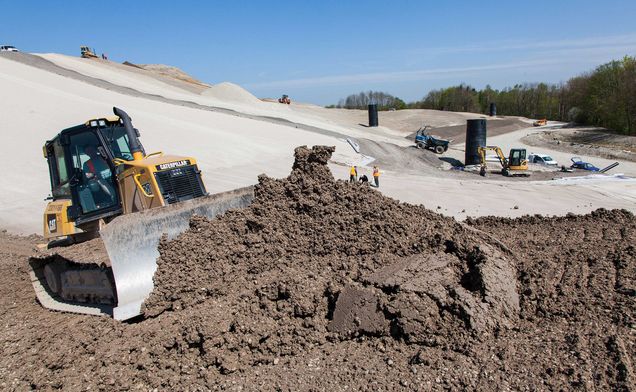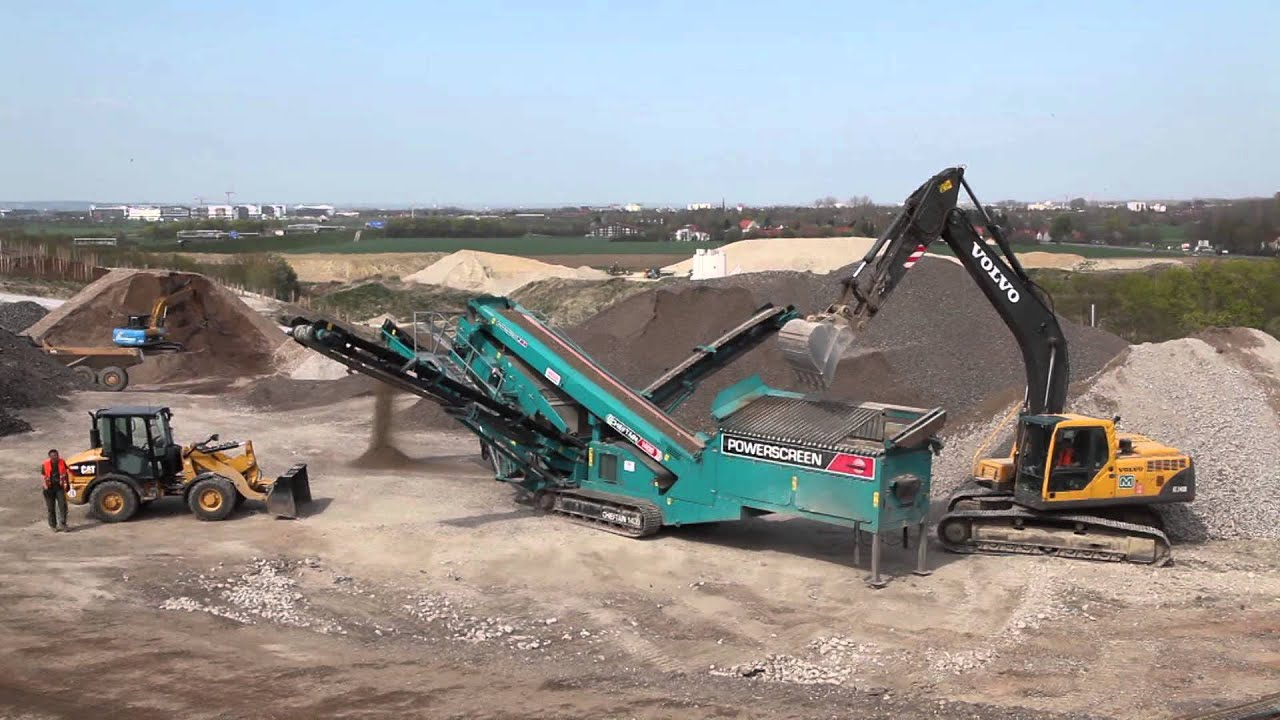Sewage Sludge Dump Becomes Local Recreation Area
August 5, 2015 | Markus Lackner
Until 2005, the sewage sludge from the two Munich treatment plants was stored at the northern dump and subsequently sealed with a layer of virgin and surface soil as well as clay. At the bottom, an asphalt tub was used for sealing. However, since the clay layer had been partly broken up by vegetation and seepage water had increasingly gotten into and thus overburdened the drainage system, rehabilitation measures according to the current state of technology became inevitable.
Innovative Dump Sealing
“35 pieces of heavy equipment are currently in use”, says construction manager Thomas Henninger of Hagn Umwelttechnik. The offer ranges from articulated dump trucks with a capacity of 20 cubic metres to 15-ton rollers, GPS-controlled excavators and caterpillars as well as mobile crushers for the creation of required drainage material on site. A mixing plant for the production of Bentokies was also erected. “This material is at the heart of the seven layers forming the new dump sealing”, Henninger explains. Bentokies consists of a clay mineral mix occurring in nature that is being refined using gravel. The material is impervious to water and possesses good swelling capacities. “Thus, cracks resulting from ground movement can be filled automatically without requiring the use of machinery”, Henninger explains the benefits of this innovative building material. The first of seven layers on top of the dump, however, is an equalising and base layer made from sewage sludge ash. On top of this is laid a capillary-breaking layer made from mineral material and on top of that the actual sealing made from two layers of Bentokies. A drainage layer made from gravel which discharges the arriving surface water in a controlled way is laid on top of this layer. The revegetation layer follows and builds upon the drainage layer and consists of highly compressed gravel which functions as a barrier for plant roots as well as virgin and surface soil. “This layer thickness was chosen to prevent roots from once again breaking through the sealing”, Henninger explains. Most of the materials used are so-called substitute dump construction material such as used track ballast, construction waste and road scarification material. This is possible due to the fact that the sealing layer reliably seals everything underneath. Greening constituted the last work step. In its course, the area’s subsequent use as local recreation area is being comprehensively incorporated.
Follow-Up Care
the majority of the seepage water has been discharged from the dump body through the drainage system. From that point onwards, it will be possible to markedly reduce the extensive treatment in the neighbouring waste water treatment plant. Accruing surface water will be channelled all the way to purpose-built seepage basins via the trenches accompanying the dump’s path network. According to Munich’s municipal sewage department, however, a few decades will pass before the dump can be cleared for use as a local recreation area by the citizens. By that time, though, the 30-m-high hill’s visual appearance will belie its past. Tree species typical for the location will share the space with bushes and rough pastures. Recreation-seekers will thus be able to enjoy an uprated view of the neighbouring football stadium and the Alps - a former sewage sludge dump will have evolved into a cultivated landscape. This not only makes the rehabilitation of the sewage sludge dump a technically challenging project but also yields additional benefits for fauna and flora in the shape of refuges and territorial gains.













